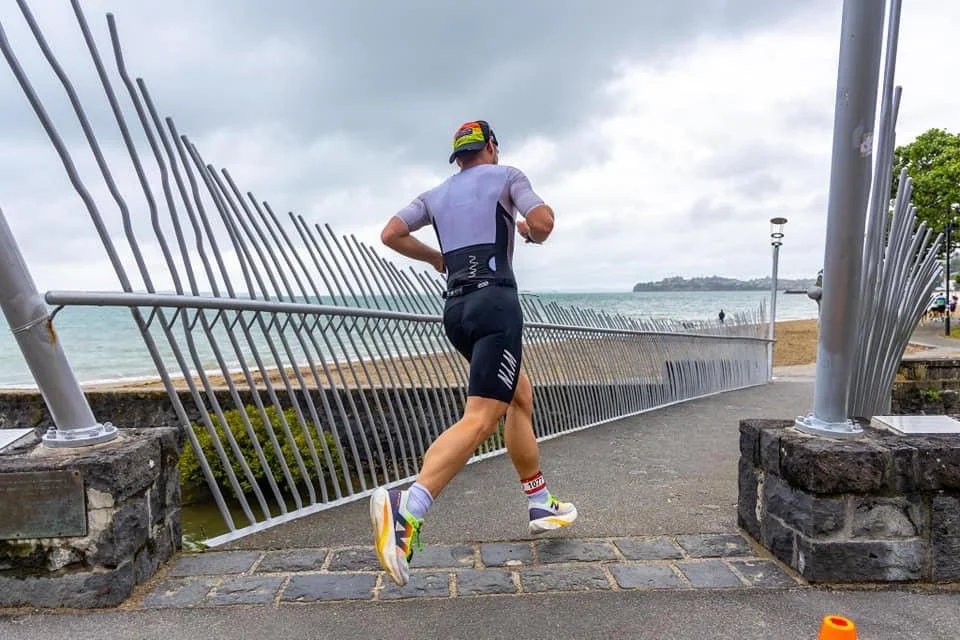How to Overcome Taper Week
Your guide to staying sane, sharp, and confident before race day
You’ve done the long rides, the hard runs, and the swim sets that had you questioning life. Now it’s taper week, that weird, slightly uncomfortable phase where the work is (mostly) done, and your job is to rest, recover, and not freak out.
If you’re feeling edgy, tired, emotional, or suddenly unsure if you’re ready, don’t worry: you’re tapering exactly right.
Here’s how to make the most of taper week, avoid the common pitfalls, and show up on race day feeling ready to fly.
What is a Taper?
Tapering is the final phase of your training where volume and intensity are strategically reduced to:
Let your body absorb the hard work you’ve done
Reduce fatigue and inflammation
Rebuild energy and sharpness for race day
Typical tapers last 7–14 days, depending on the race distance. You’ll still train but with shorter, race-focused sessions to keep the body primed without overloading it.
The Taper Week Mind Games
Let’s be real taper week can mess with your head. Common feelings include:
“I feel sluggish, have I lost all fitness?”
“Why do my legs feel heavy?”
“I think I’m getting sick...”
“Should I squeeze in one more long ride/run just to be sure?”
These are all normal. Seriously. Your body is shifting from constant stress to recovery mode. You’re not losing fitness, you’re letting it surface.
How to Stay Sane During Taper Week
1. Trust the Process
Your fitness doesn’t disappear in a few days. The work is done. Backing off now is what allows your body to repair, recharge, and sharpen up.
“You don’t get fitter in the last 7 days. You get faster by letting fitness shine through fatigue.”
2. Stick to the Plan
Follow your taper sessions. They’re short, purposeful, and often include race-specific efforts to keep you sharp.
Avoid adding “just one more” long workout. That’s a recipe for showing up tired.
3. Dial in Your Sleep & Nutrition
Use this lower-volume week to get quality sleep and eat well. Focus on:
Hydration
Carbs (don’t carb load all week, just eat your usual balanced meals with a bit more carbs in the 2–3 days before the race)
Avoiding new or risky foods
4. Tame the Taper Tantrums
Taper week is prime time for phantom injuries and irrational mood swings.
Feel a random twinge in your knee? It'll probably disappear in a day.
Suddenly doubt your training? Totally normal.
Annoyed at your loved ones for no reason? Also common!
Don’t over-analyze. Ride the wave. Be kind to yourself (and your support crew).
5. Visualize Race Day
Use the extra headspace to mentally prepare:
Picture your race morning routine
Visualize each leg of the triathlon
Rehearse staying calm during transitions, pacing the bike, and finishing strong
Mental prep helps reduce race-day nerves and boosts confidence.
6. Sort Your Gear Early
Don’t leave gear checklists and packing until the last minute.
Lay everything out 3–4 days ahead
Test your race-day nutrition and equipment
Triple check your bike, especially if traveling
This lowers last-minute stress and lets you focus on the race, not logistics.
7. Embrace the Stillness and Reflect
This is the calm before the storm in the best way.
Enjoy the fact that you're not rushing to squeeze in workouts. Go for walks. Stretch. Breathe. Let the excitement build. Take a moment to reflect back on all the hard work you’ve done.
Final Thoughts
Taper week is one of the most important and mentally challenging parts of triathlon prep. But if you trust your training, take care of your body, and resist the urge to overdo it, you’ll show up on race day fresh, focused, and ready to give it everything.
At Hive Endurance, we guide our athletes through taper week with personalised strategies that match their training and mindset. Because we know: the hardest part of taper isn’t the training, it’s staying out of your own way.

